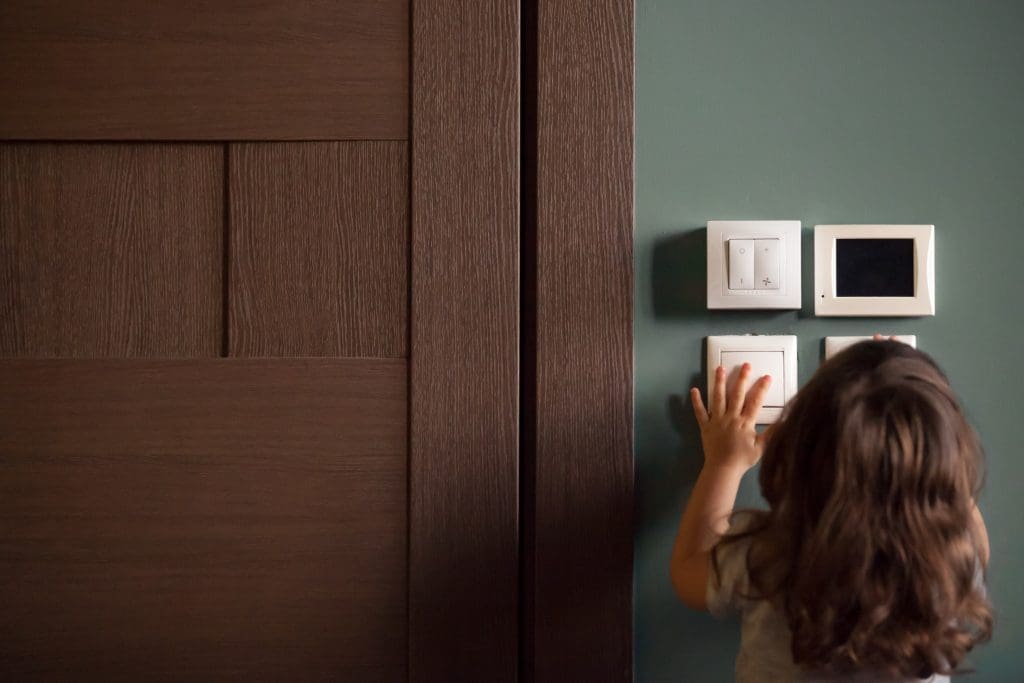Flipping on a light switch, coffeemaker, or any home electrical appliance might seem like routine actions, but these everyday interactions come with hidden risks. Globally, around 1.2 million people sustain electrical accident-related injuries each year.
Electrical safety in homes is a very important aspect to consider, given that the residential sector accounts for 29% of the world’s electricity consumption. You must take measures to protect your family from electrical dangers like shocks caused by a broken switch or equipment, faulty wiring, and damaged electrical cords.
How can you stay safe from electrical hazards?
By recognizing potential risks, ensuring proper installations, and adopting smart safety habits, you can create a safer home environment and reduce the likelihood of electrical accidents.
Here are a few easy steps to get you started:
- Service appliances: With old switches, it might not seem like anything is wrong on the surface because they work. But frayed cords, cracked or broken plugs, and damaged appliances can give someone a shock. Replace them with modern plugs that have safety barriers between connections.
- Purchase good quality electrical products: Remember to check the details before purchasing products and beware of counterfeit products sold at lower prices. Buy appliances that meet local regulations and certification compliance. This adds a layer of security against electrical hazards.
- Avoid fixing electrical problems yourself: Do not attempt to repair faulty electrical appliances. While the faulty part can be mitigated by cutting off the power on the specific breaker controlling it, it is always wise to get a qualified technician or licensed electrician to check it out, too.
- Keep it clean: Clear fluff, dust, and lint particles that collect around electric motors and lint filters in your dryer.
- Avoid the use of hazardous cleaning agents: Clean ovens and cooktops, but do not spray household cleaners, detergents, or insecticides on electrical accessories. This can cause cracking, creating an electrical hazard.
Electrical safety for children
As adults, you can spot when something is wrong with a switch or electrical connection, but young children cannot. And it is not possible to supervise them 24/7. So, how can you protect your little ones from the dangers of poking fingers into outlets or playing with appliances?

Here’s a quick checklist to guide you:
- Use childproof plugs
- Switch off and unplug appliances when not in use
- Keep cords out of reach and inspect them regularly
- Avoid using defective electric devices
- Add an extra protective device called Residual Current Devices in the electrical panel to avoid risks of electrocution
By making your home child-proof, you can prevent unfortunate accidents and enjoy peace of mind.
Understanding electrical safety near water
Here’s a reminder of an important lesson taught in school: water is a good conductor of electricity.
Combining the two can lead to short circuits, fire, electrocution, or equipment damage (in the case of non-water-resistant products). That’s why it is essential to pay attention to where electric appliances are placed.
You can stay vigilant and ensure the safe use of electric appliances near water by following these simple steps:
- Keep appliances far from water
We’ve already established why. Be mindful when carrying your phone into the bathroom or using an electrical appliance near the sink.
- Always wear shoes
Never touch any electric appliances with wet hands or bare feet. Wear rubber or plastic-soled footwear in laundries, on concrete floors, and outdoors.
- Do not swim towards danger
Electricity near swimming pools can be lethal. Get an expert to inspect the wiring regularly. Avoid keeping a radio, speaker, portable electric appliances, and electrical cords near the pool.
Protect your home and your loved ones
In conclusion, electrical safety for homeowners comes down to three main points:
- Prioritize personal protection while handling electrical devices
- Always reach out to an experienced technician to test and repair faulty electric equipment
- Secure extension cords and outlet strips with shields and cable coverings
You cannot predict electrical accidents, but you can take necessary measures and precautions against the risk.
Find products that meet your needs
Electrical panel safety products are like gatekeepers. With advanced electrical protection devices like surge protectors and circuit breakers from Schneider Electric, you can stay ahead of common electrical risks.
Our range of RCCBs (residual current circuit breakers), SPDs (surge protection devices), AFDDs (arc fault detection devices), MCBs (miniature circuit breakers), and isolators are designed to enhance electrical protection.
The Easy9 and Resi9 series can help add a layer of electrical safety with their reliability and ease of installation. They support the need for advanced protection with circuit breakers, residual current devices, switches, and surge protectors.
Our Acti9 Active range features built-in residual current devices, miniature circuit breakers, and arc fault detection devices. It enables remote monitoring and management through the EcoStruxure™ panel server, providing real-time data and alerts for proactive asset management.
Prioritize electrical safety in your home
At Schneider Electric, we take safety very seriously and design products that are reliable and give you peace of mind. Our innovations laid the foundation for 150 years of advancements in electrical protection devices. With our solutions, you can protect your house, belongings, and, most importantly, your loved ones. We’re committed to offering high-quality products and support to secure your living spaces. Visit our website for more information about our products and services.
Disclaimer: ** A. Electrical equipment should be installed, operated, serviced, and maintained only by qualified personnel. No responsibility is assumed by Schneider Electric
for any consequences arising out of the use of this material.
B. Apply appropriate personal protective equipment (PPE) and follow safe
electrical work practices. See NFPA 70E or CSA Z462 or NOM-029-STPS. **




Add a comment